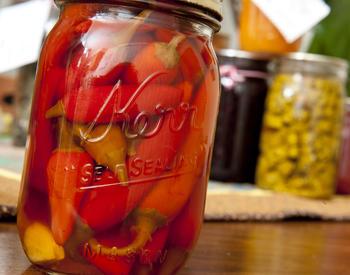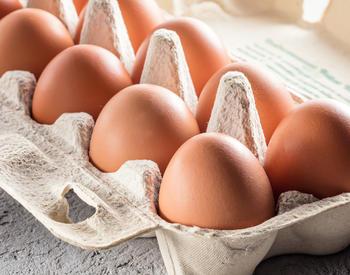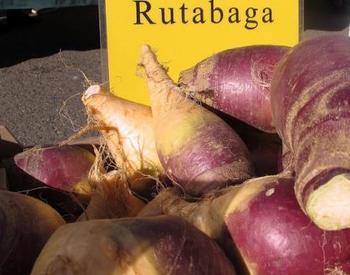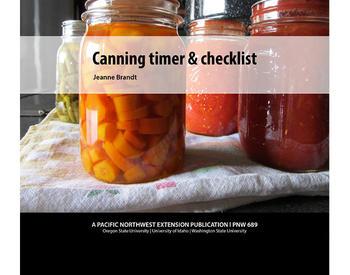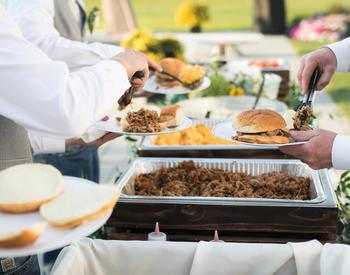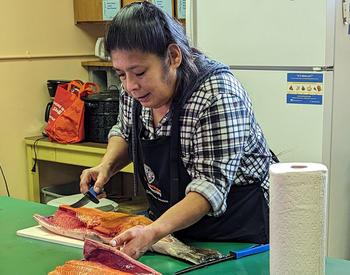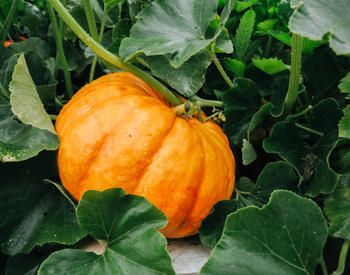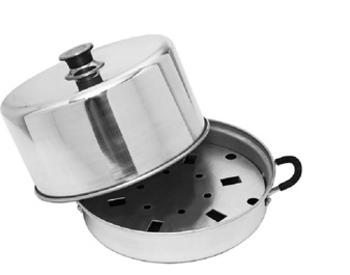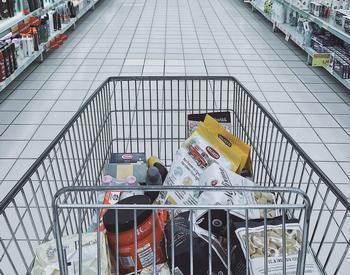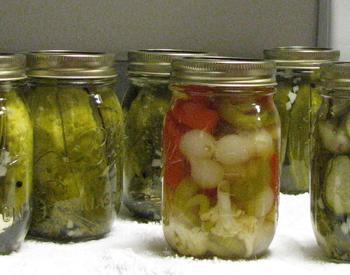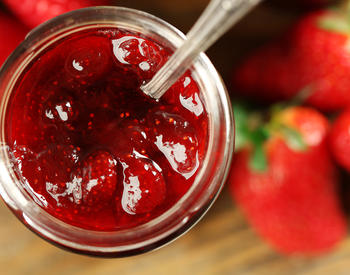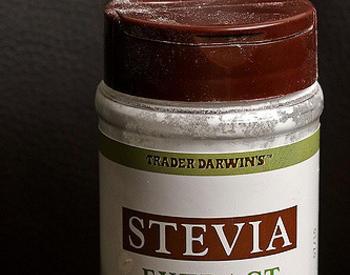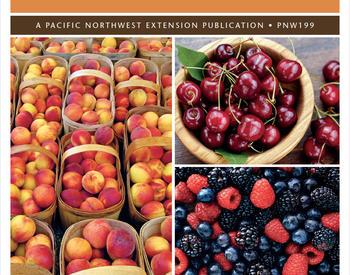Download this publication as a PDF
Squash is abundant during the summer months. Varieties of summer squash include green and yellow zucchini, yellow crookneck, straight neck, scallop and patty pan.
For best quality, select young, tender squash. When over-mature, the rind becomes hard and the seeds toughen. These do not preserve well and do not have a good flavor.
Summer squash can be frozen, dried and pickled.
Note: Canning summer squash, including zucchini, is no longer recommended. There is uncertainty related to the determination of research-based processing times. These products also have very poor quality when canned. Zucchini can be canned with tomatoes. A safety-tested recipe is included below.
Freezing
- Wash, trim and slice or dice squash
- Blanch in boiling water: 3 minutes for 1¼ inch slices or ½ inch diced pieces; 6 minutes for 1½ inch slices. (Allow 1 gallon of water per pound of vegetables.)
- Cool immediately in ice water
- When cool, drain.
- Pack into moisture/vapor-resistant freezer containers
- Seal and store at 0°F or below for best quality.
Grated zucchini squash can be frozen for use in breads. Blanching is not necessary because spices will mask flavor changes.
Drying
- Wash, trim and cut into ¼ inch slices
- Spread in a thin layer on drying trays
- Dry to a brittle stage in the sun or in an oven or dehydrator at 140°F.
If desired, slices can be sprinkled with seasoned salt or dipped in barbecue sauce before drying to make “zucchini chips.” Serve them as a snack or with dips.
Dried squash can be used in soups or casseroles. Dried squash can be ground and used as a seasoning.
Pickling
Bread & Butter Pickles (Yield: 8-9 pints)
- 16 cups fresh zucchini, sliced
- 4 cups onions, thinly sliced
- 4 cups white vinegar (5%)
- ½ cup pickling or canning salt
- 2 cups sugar
- 2 tsp. ground turmeric
- 2 Tbsp. celery seed
- 4 Tbsp. mustard seed
Cover zucchini and onion slices with 1 inch of water and salt. Let stand 2 hours, then drain thoroughly. Combine vinegar, sugar and spices. Bring brine to a boil. Add zucchini and onions, and simmer 5 minutes. Fill jars with mixture and pickling solution, leaving ½ inch headspace. Adjust lids and process in boiling water bath 10 minutes for pints and quarts. After processing, take canner off heat. Remove lid. Wait 5 minutes before removing jars.
Zucchini Relish
- 10 cups grated zucchini
- 4 cups grated onions
- 5 Tbsp. salt
- 1 red pepper, chopped
- 1 green pepper, chopped
- 2¼ cups vinegar (5%)
- 4 cups sugar
- 1 tsp. nutmeg
- 1 tsp. dry mustard
- 2 Tbsp. celery seed
Add salt to grated zucchini and onions and let stand in the refrigerator for 24 hours. Drain in a colander. Add chopped peppers. Mix remaining ingredients together and bring to a boil. Add zucchini/onion/pepper mixture. Bring to a boil; reduce heat and simmer for 20 minutes, stirring frequently to prevent sticking. Ladle hot relish into jars, adjust lids and process 10 minutes in a boiling water canner. After processing, take canner off heat. Remove lid. Wait 5 minutes before removing jars.
Canning
Tomatoes with Zucchini
Quantity: An average of 12 pounds of tomatoes and 4 pounds of zucchini is needed per canner load of 7 quarts. An average of 7 pounds of tomatoes and 2½ pounds of zucchini is needed per canner load of 9 pints.
Procedure
- Wash tomatoes and zucchini
- Dip tomatoes in boiling water 30 to 60 seconds or until skins split. Then dip in cold water, slip off skins and remove cores and quarter
- Slice or cube zucchini
- Bring tomatoes to a boil and simmer 10 minutes
- Add zucchini and boil gently 5 minutes
- Fill jars with mixture, leaving 1 inch headspace
- Add 1 teaspoon of salt per quart, if desired
- Adjust lids and process in a pressure canner at 240°F: 30 minutes for pints, 35 minutes for quarts (10 pounds pressure with a weighted gauge canner, 11 pounds with a dial gauge canner). Adjust pressure for altitude as shown.
- After processing, take canner off heat. Remove lid Wait 5 minutes before removing jars.
Zucchini Pineapple
Caution: Home-canned zucchini-pineapple mixtures have been a popular way to use abundant zucchini squash. Because squash is a low-acid food, it is critical to add enough acid (pineapple juice and/or lemon juice) for safe processing in a boiling water bath.
The following recipe has been tested and will be safe if followed exactly.
- 1 gallon zucchini squash
- 3 cups sugar
- 46 oz. can pineapple juice
- 1½ cups lemon juice
Procedure
- Peel zucchini and either cut into ½-inch cubes or shred
- Combine all ingredients in a large kettle. Bring to a boil and simmer 20 minutes
- Fill jars with hot mixture and cooking liquid, leaving ½ inch headspace
- Adjust lids and process half-pints or pints 15 minutes in boiling water bath
- After processing, take canner off heat. Remove lid. Wait 5 minutes before removing jars.
Caution: There are recipes for zucchini jam circulating. Their high proportion of sugar will prevent botulism. The sugar should not be reduced in these recipes.
Source: OSU Master Food Preserver Program
2012 Oregon State University. OSU Extension Service cooperating. OSU Extension Service offers educational programs, activities, and materials without discrimination based on race, color, religion, sex, sexual orientation, national origin, age, marital status, disability, or disabled veteran or Vietnam-era veteran status. OSU Extension Service is an Equal Opportunity Employer.
